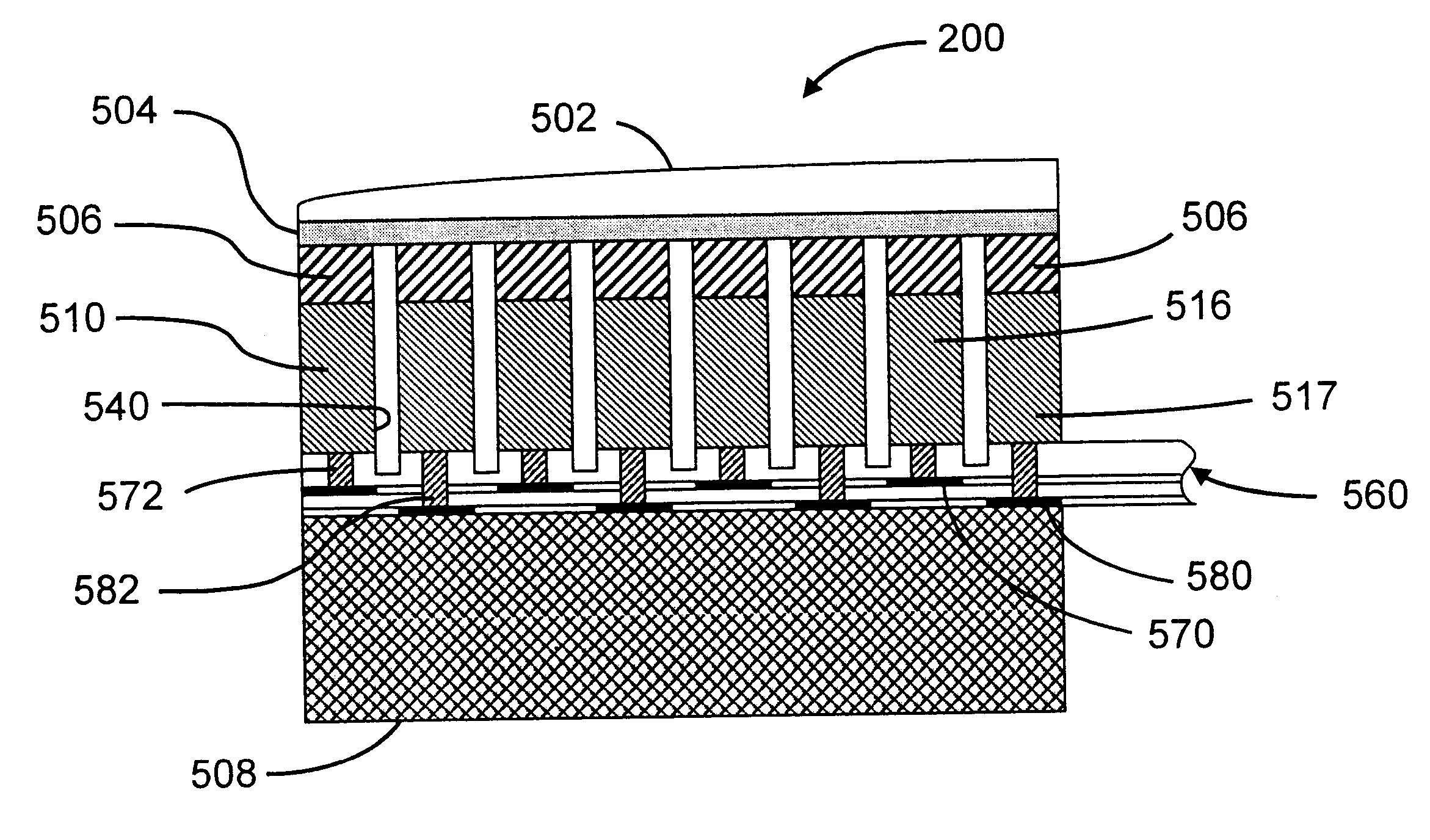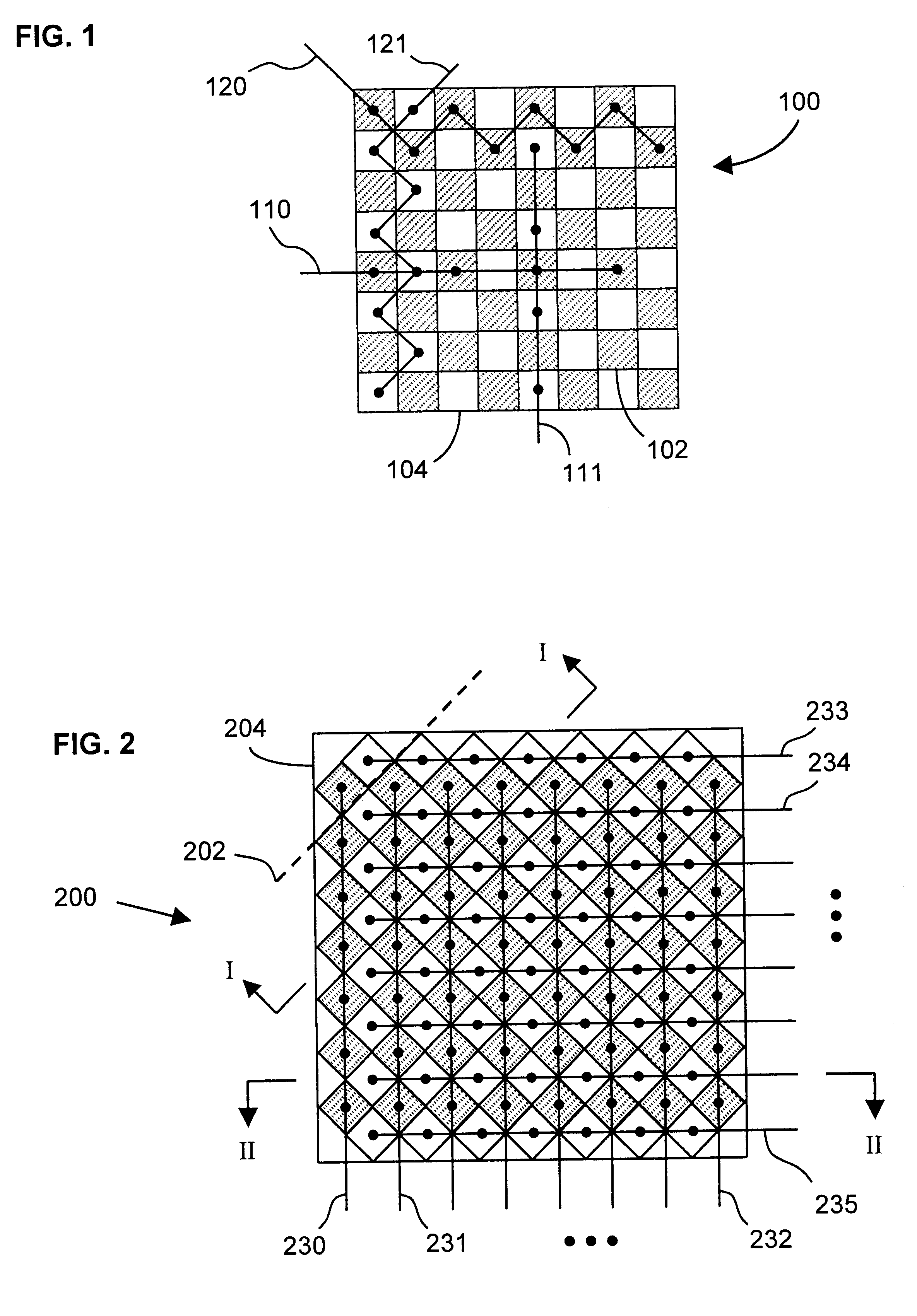Ultrasound imaging with acquisition of imaging data in perpendicular scan planes
- Summary
- Abstract
- Description
- Claims
- Application Information
AI Technical Summary
Benefits of technology
Problems solved by technology
Method used
Image
Examples
Embodiment Construction
The lens 520 in the preferred embodiment of the invention is designed to improve the ability of the array to independently and simultaneously adjust the focus of the two apertures, that is, of the two orthogonal scan planes made possible by the invention. In order to better understand the lens used in the invention, it is helpful to recall the way in which conventional arrays focus. These methods are therefore reviewed here.
In conventional linear arrays, there are two primary methodologies for mechanically focusing the array in elevation where electronic delay control does not exist. According to the first method, the geometric focus is created by curving the ceramic. Typically, this is done by using a convex-concave ceramic as shown in FIG. 13A. The geometric focus is simply given by the following equation: ##EQU2##
where the radius of curvature of the ceramic is equal to the geometric focus in elevation. This curvature only occurs in one dimension for a conventional linear array.
Th...
PUM
 Login to View More
Login to View More Abstract
Description
Claims
Application Information
 Login to View More
Login to View More - R&D
- Intellectual Property
- Life Sciences
- Materials
- Tech Scout
- Unparalleled Data Quality
- Higher Quality Content
- 60% Fewer Hallucinations
Browse by: Latest US Patents, China's latest patents, Technical Efficacy Thesaurus, Application Domain, Technology Topic, Popular Technical Reports.
© 2025 PatSnap. All rights reserved.Legal|Privacy policy|Modern Slavery Act Transparency Statement|Sitemap|About US| Contact US: help@patsnap.com



